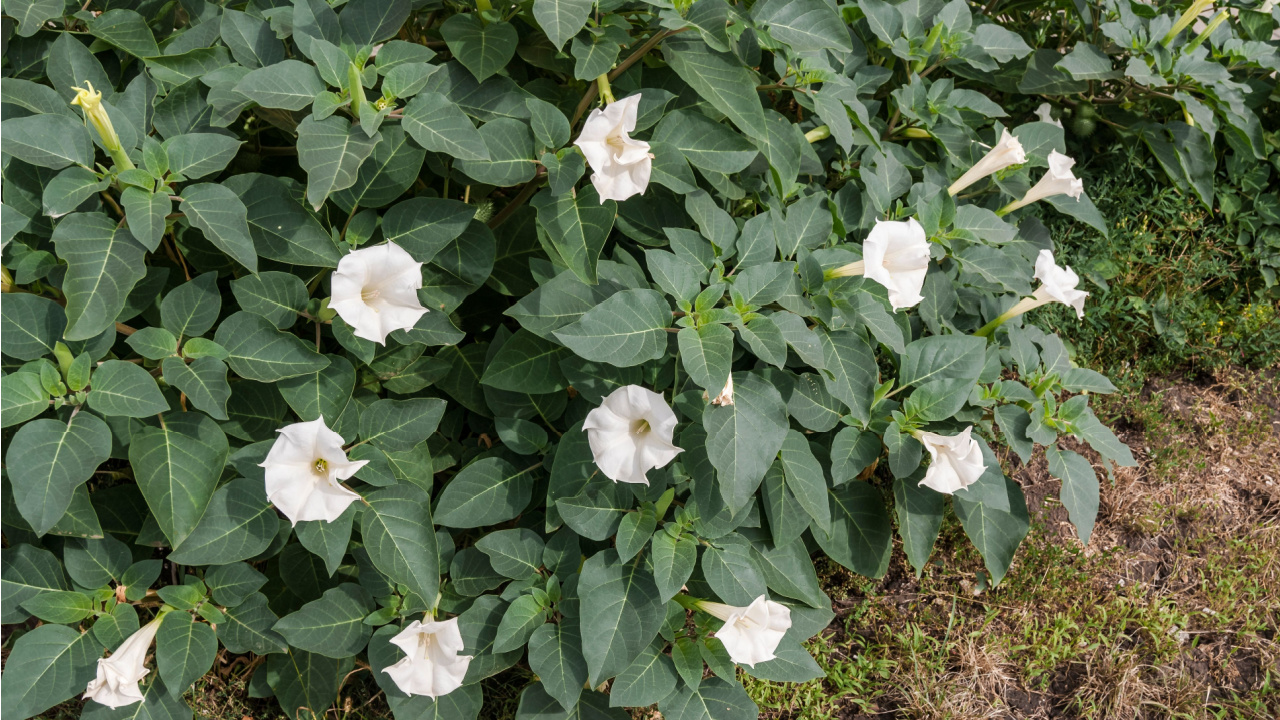

Think your garden is all beauty and no danger? Think again. Some of the most stunning plants can be surprisingly lethal if you’re not careful.
From vibrant flowers to lush greenery, these plants hide toxic dangers that could harm you, your family, or even your pets. Discover why recognizing these threats is crucial for maintaining a safe and beautiful environment.
We’ve selected these plants not just for their beauty but for their potential risks. Understanding their dangers helps ensure you can enjoy your garden without unexpected harm.
1. Jimson Weed
Jimson weed, recognized by its green leaves sometimes tinged with purple, is a plant you definitely don’t want to mess with. Although it has been historically used to treat conditions like asthma, ingesting or inhaling it can lead to severe reactions such as nausea, hallucinations, and vomiting. This plant is widespread in North America.
2. Lantana

The vibrant lantana is eye-catching but keep it away from children and pets. Despite its appealing appearance, this plant is poisonous, capable of causing illness if ingested or touched.
3. Deadly Nightshade

Deadly nightshade, or Atropa belladonna, is a plant with a lethal legacy, belonging to the same botanical family as tomatoes and potatoes. Its main toxic components—atropine, scopolamine, and hyoscyamine—affect the nervous system. Symptoms of poisoning may take days to appear but can include dilated pupils, rapid heartbeat, blurred vision, and delirium, leading to potentially fatal outcomes. The pretty, juicy-looking red berries make this plant particularly dangerous to young children who don’t know better.
Ingesting just a handful of these berries could be enough to endanger an adult’s life.
4. Mountain Laurel

The Mountain Laurel, Kalmia latifolia, with its stunning blooms, is deceptively dangerous. Consumption of any part of this plant can be fatal due to toxins like andromedotoxin. Even the pollen can be harmful, and children have been poisoned from just sucking on the flowers of this plant.
5. Chinese Lanterns (Physalis alkekengi)

Chinese Lantern plants are recognized for their vibrant, lantern-shaped pods, which are often used in dried floral arrangements and wreaths. However, the leaves and unripe fruit of the plant contain toxic substances, particularly solanine. Keep the plant parts that contain toxins out of reach of children and pets.
6. Manchineel (a.k.a. Little Apple of Death)

The Manchineel tree, often called the “Little Apple of Death,” is notorious for its deadly fruit and is considered one of the most poisonous trees in the world. Found in coastal regions of the Caribbean, Central, and northern South America, every part of this tree, especially its sap, is laden with potent toxins.
7. Giant Hogweed
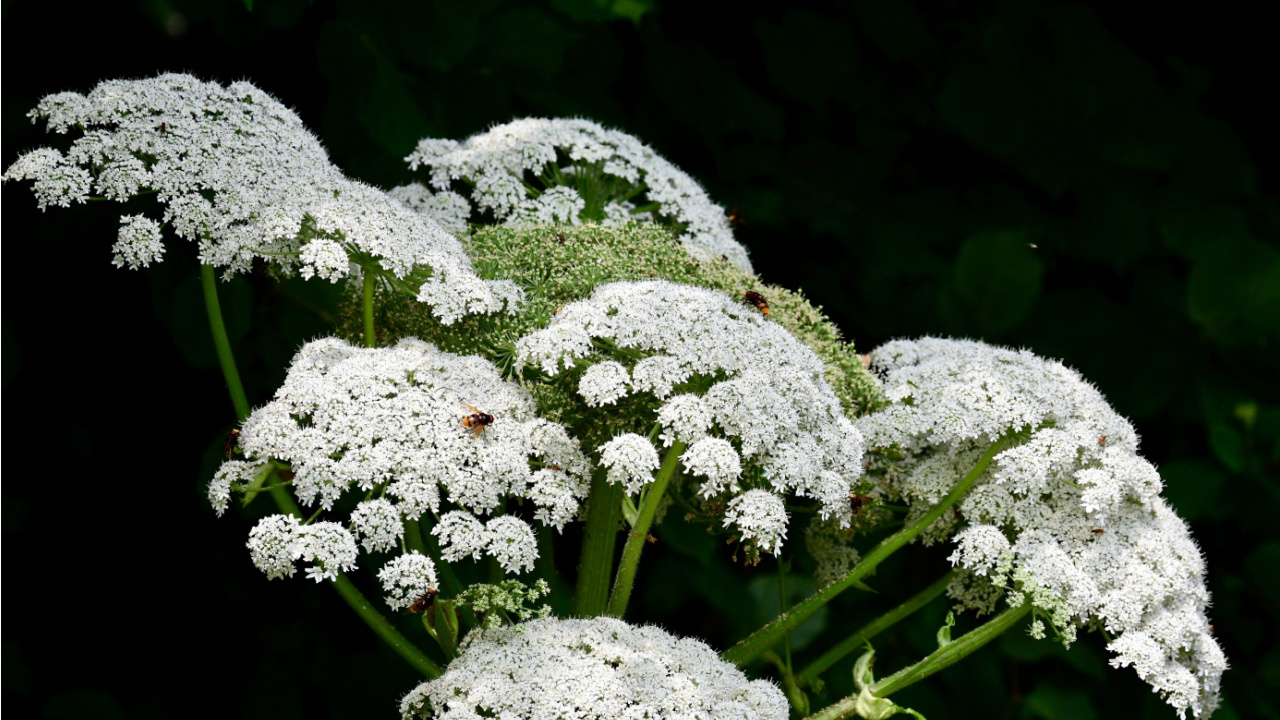
Giant Hogweed’s danger lies in its sap, which can cause phytophotodermatitis, making the skin hypersensitive to sunlight and resulting in severe burns and blisters. It’s an invasive plant that causes painful burns in humans. If you have this on your property, keep dogs and children well away from it, and make sure your skin is covered before you attempt to remove it.
8. Yellow Dock
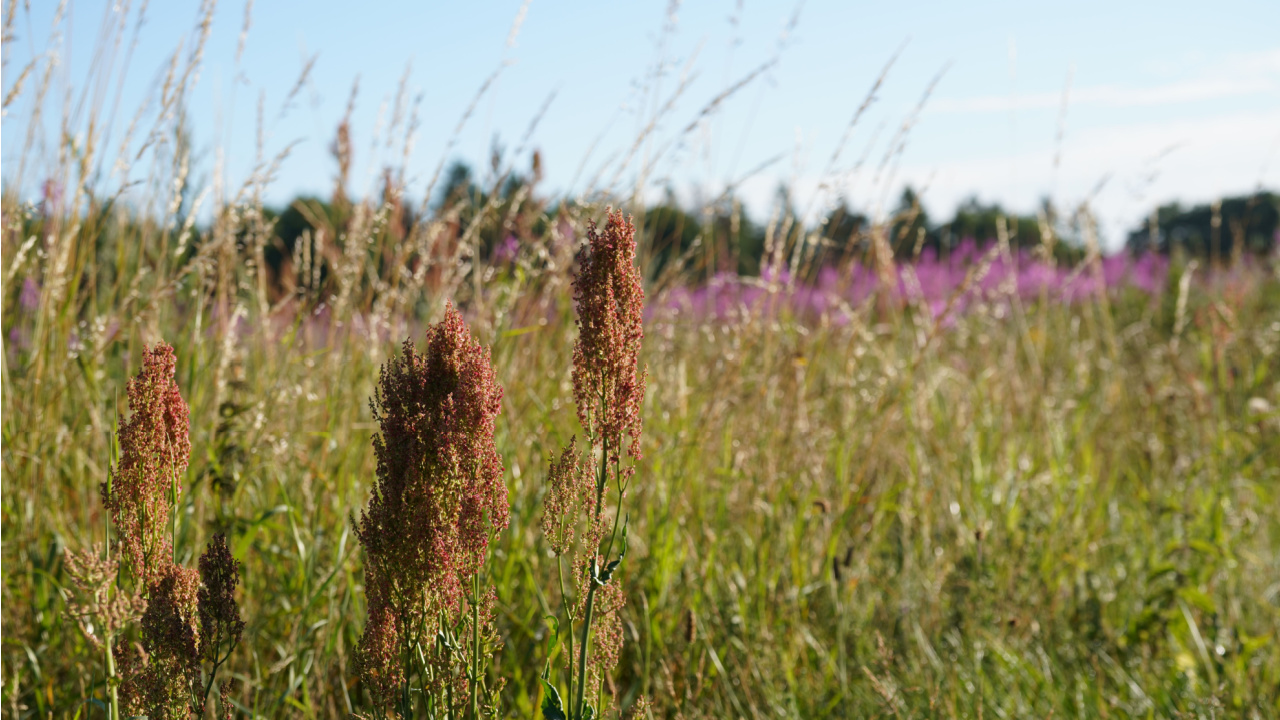
While Yellow Dock is known for its medicinal uses, it can present dangers if consumed raw or unprocessed. Its consumption can lead to health issues, including respiratory distress and heart complications. It’s also toxic to dogs. Proper preparation and knowledge are essential, so consult a seasoned herbalist if you’re unsure how to use it.
9. Rosary Pea
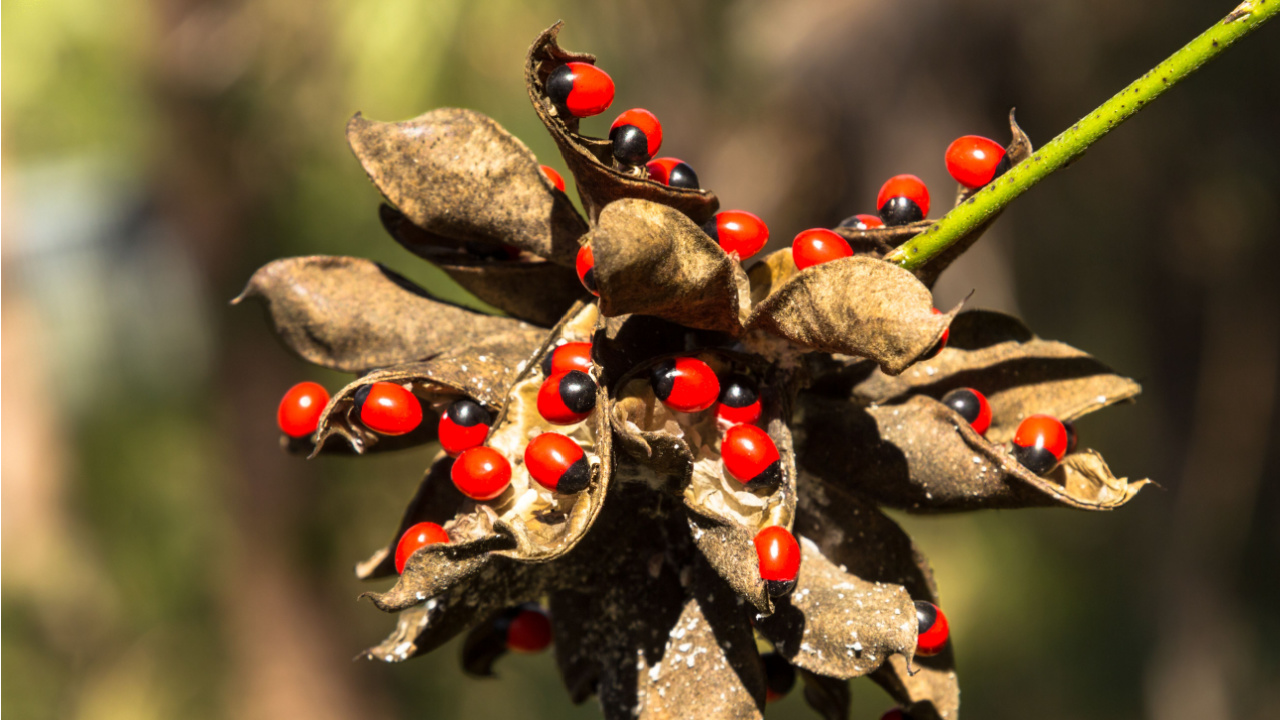
Rosary peas, with their striking orangey-red seeds marked by a single black spot, are as dangerous as they are beautiful. Found in tropical regions and often used in jewelry like prayer rosaries, these seeds hide a lethal secret. Any damage to the seed can release abrin, a toxin as dangerous as ricin. Just a tiny scratch or chew can unleash its deadly potential, making the rosary pea a beautiful but perilous adornment.
10. Tobacco
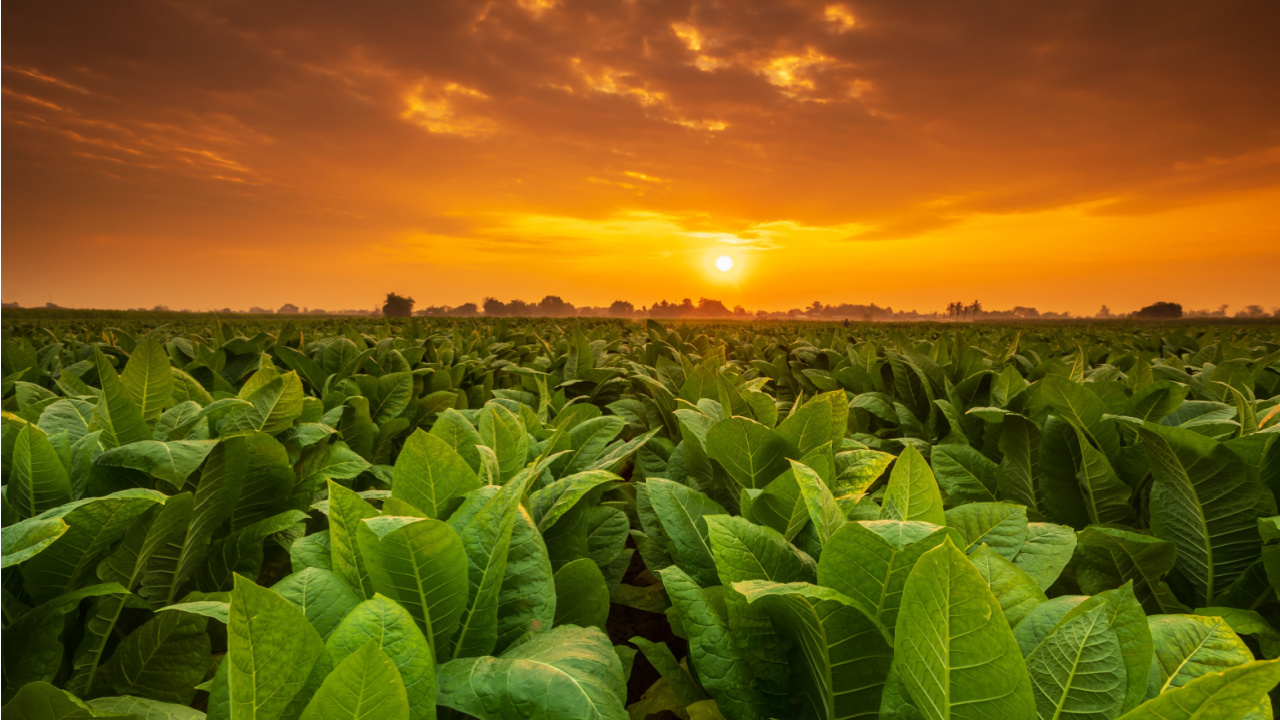
Tobacco, a plant known worldwide for its addictive properties, harbors nicotine, a toxin that is fatal if ingested in sufficient quantities. Ingesting tobacco can cause severe symptoms, including abdominal pain, hypertension, tremors, and potentially lead to coma and respiratory failure.
11. Lily of the Valley
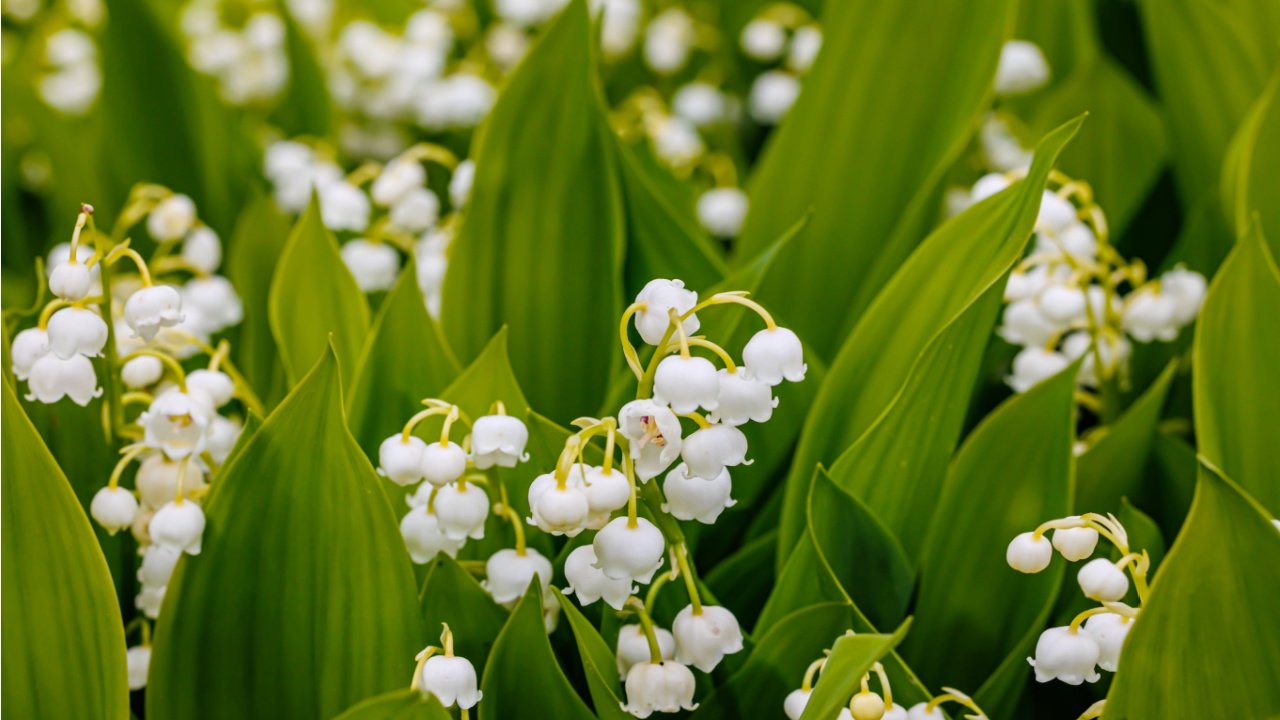
Fans of “Breaking Bad” might recall Walter White’s use of Lily of the Valley’s innocent appearance for sinister purposes. This plant’s cardiac glycosides can cause severe symptoms like dizziness, vomiting, and diarrhea, leading to hospitalization or even death if untreated.
12. Castor Oil Plant

While castor oil is celebrated for its healing properties, the castor oil plant, from which it comes, is highly toxic due to ricin, one of the most poisonous substances known. Even a single seed can be deadly, leading to severe symptoms and death by dehydration.
13. Brugmansia (a.k.a. Angel’s Trumpets)

Angel’s Trumpets, with their enchanting trumpet-shaped flowers, contain dangerous toxins that can induce hallucinations and severe physical effects. Native to South America’s tropical regions, every part of this plant is poisonous, capable of causing disorientation, severe illness, and potentially life-threatening symptoms.
14. Foxglove

Foxglove’s bell-shaped flowers may catch your eye with their beauty, but they are one of the most dangerous plants in the world. These plants contain digitalis, a compound used in heart medications. Accidentally ingesting foxglove can be extremely dangerous, leading to symptoms such as nausea, headaches, and severe irritation.
Always handle with gloves to avoid any risk.
15. Wisteria

Wisteria vines are known for their stunning blooms but beware of their seed pods. Toxic to dogs, cats, and humans, ingestion can lead to symptoms like vomiting and diarrhea. All parts of the plant contain harmful compounds like lectins and wisterin.
16. Lilies
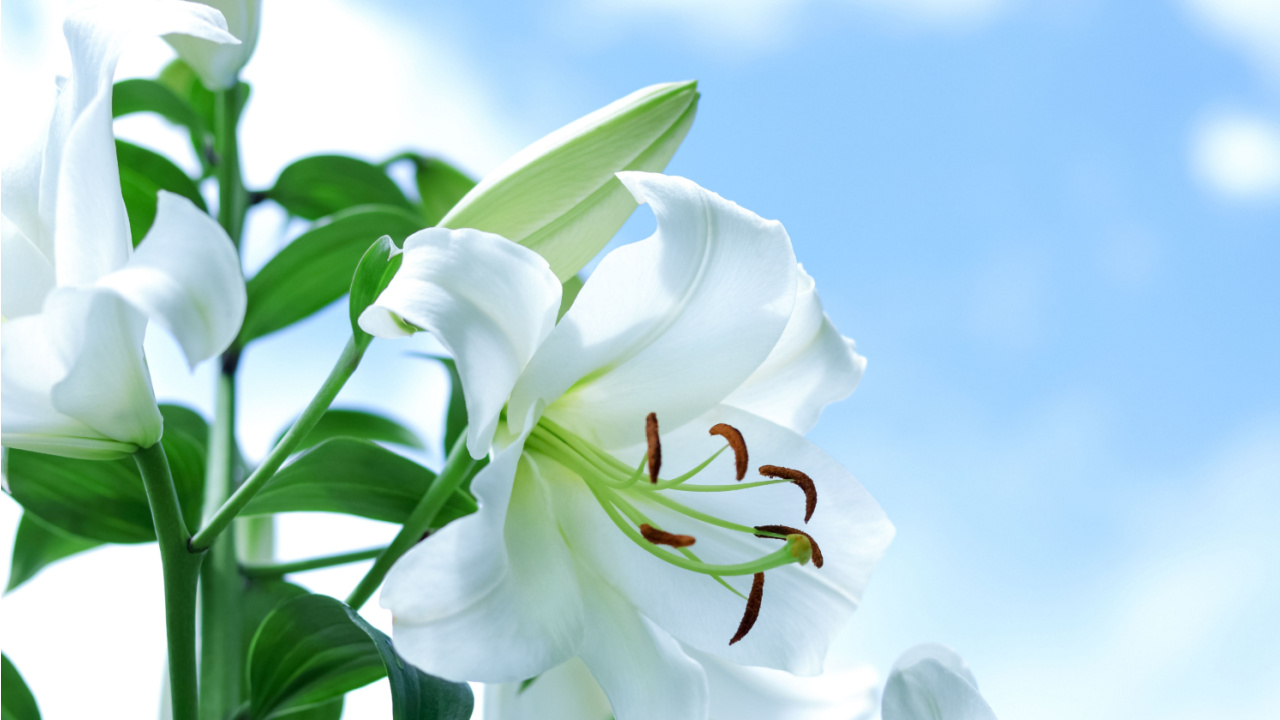
Lilies, particularly those in the Hemerocallis genus, pose a deadly risk to cats, causing acute kidney failure with even small amounts. Popular varieties like Easter lilies and tiger lilies are especially hazardous. Cats should be kept away from these flowers, as they are also toxic to dogs and humans.
17. Dieffenbachia

Known as dumb cane, Dieffenbachia can be deadly if ingested, leading to severe symptoms including swollen airways and difficulty breathing. Contact with the plant can also cause skin irritation.
18. Daffodil

While daffodils signal the arrival of spring, their bulbs contain toxins dangerous to dogs and humans. Ingesting daffodil bulbs can lead to vomiting, diarrhea, convulsions, and cardiac arrhythmias.
19. Hydrangea

Hydrangeas, with their lush flowers, contain cyanogenic glycosides, compounds that can release cyanide when ingested. Although it takes a significant amount to cause severe poisoning, pets and children should be kept away from these plants to avoid any risk of illness.
20. Oleander (a.k.a The Jericho Rose)

Oleander is renowned for its beauty but is infamous for its toxicity. Every part of the plant is poisonous, containing cardiac glycosides that can cause severe illness or death upon contact or ingestion. Symptoms of oleander poisoning are immediate and severe, including cardiac and gastrointestinal distress.
Even honey derived from oleander flowers can carry toxins, and inhaling the smoke from burning oleander can lead to poisoning.
21. Water Hemlock (a.k.a. Poison Parsnip)
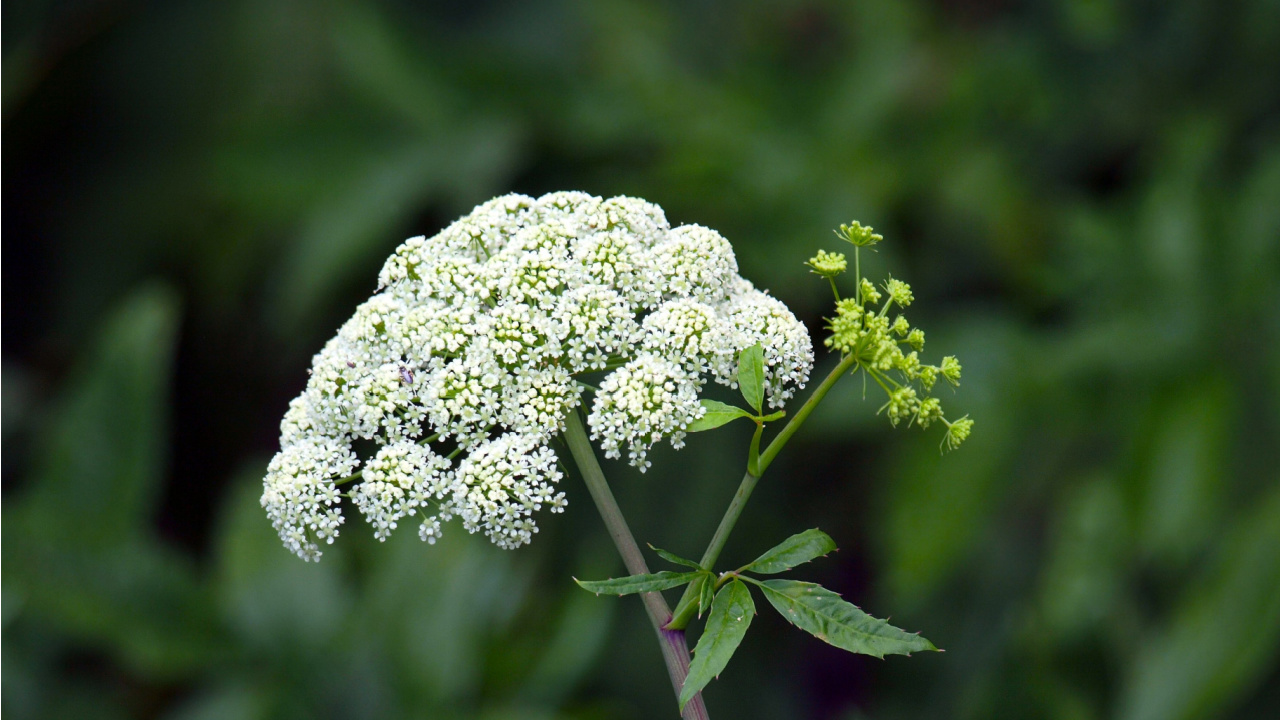
Water Hemlock, disguised as a harmless wildflower, is one of North America’s most dangerous plants. Its white flowers and carrot-like scent might fool you, but its toxins are fierce, attacking the nervous system. Ingesting even a small part can lead to convulsions, tremors, and severe nervous system damage.
Known as Poison Parsnip, this plant’s roots contain cicutoxin, especially potent in spring, leading to symptoms like nausea, vomiting, and potentially, respiratory failure or heart problems, proving fatal within hours.
22. Philodendron

Philodendrons are popular houseplants that add a tropical vibe to indoor spaces. Yet, their sap can cause significant discomfort if it comes into contact with skin or is ingested, leading to throat swelling, difficulty breathing, and stomach upset. While severe reactions are rare, it’s important to keep these plants out of reach of children and pets to prevent any accidental exposure.
23. English Yew
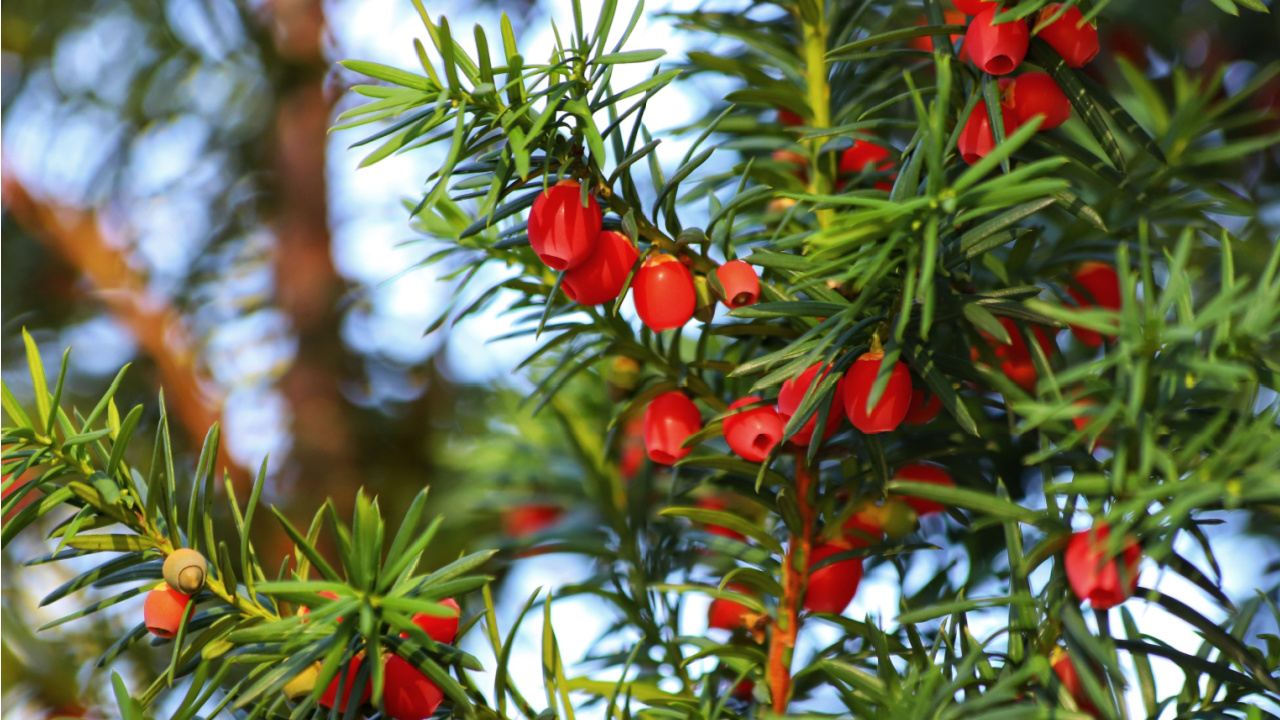
The English Yew, an elegant tree known for its red berries, is potentially lethal if ingested. Apart from the berries, the entire plant is toxic, with seeds containing highly potent taxane alkaloids. Ingesting a small amount of its parts can lead to serious symptoms, including convulsions and heart failure.
24. Mistletoe

Mistletoe, a symbol of holiday cheer, might not kill you, but it’ll certainly make you sick if you eat it. While its ability to cause death is debated, it can certainly induce digestive issues, a slowed heartbeat, and even hallucinations in humans and pets in large doses. Like the other plants on this list, keep this parasitic plant well away from children and pets.
25. White Snakeroot
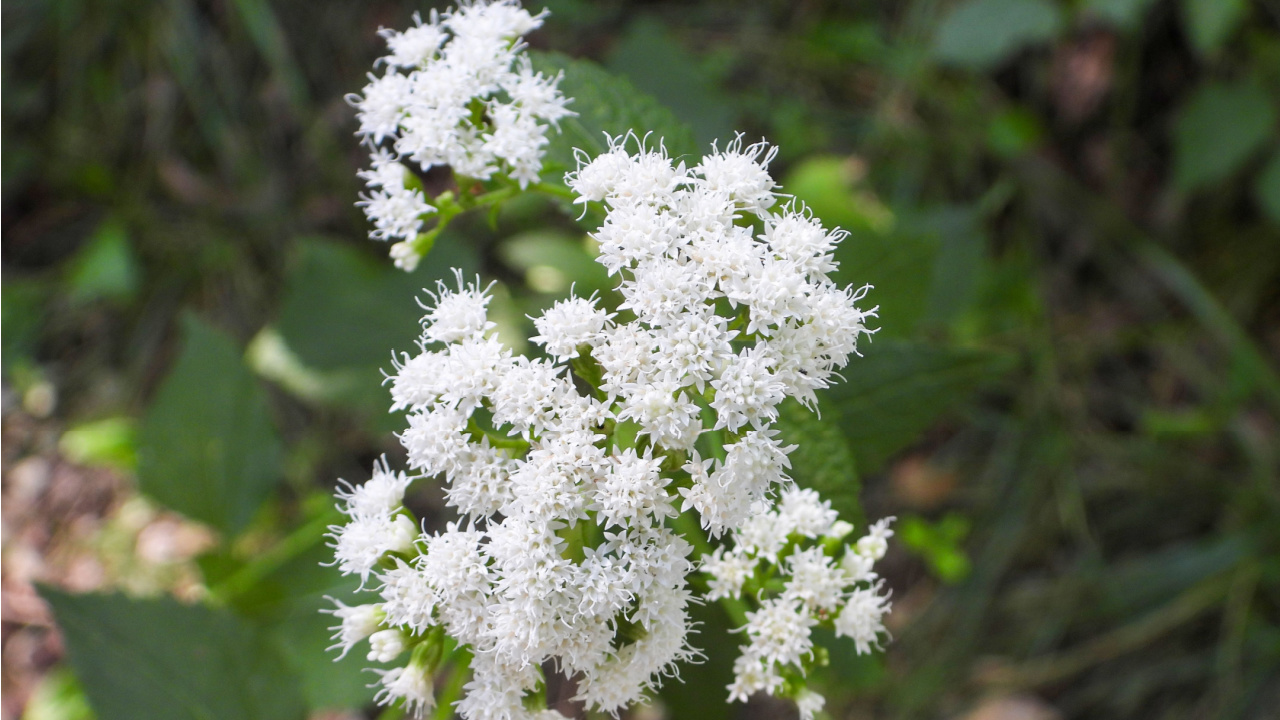
White snakeroot contains a deadly chemical called tremetol. All parts of this plant are poisonous to the majority of warm-blooded animals. While direct consumption will cause poisoning in humans, the most common route of poisoning is via “milk sickness,” where humans ingest dairy products or meat from cows that have eaten white snakeroot.
Interestingly, Abraham Lincoln’s mother reportedly died after drinking milk from a cow that ate white snakeroot. Its ingestion can lead to severe vomiting, delirium, and potentially fatal outcomes.
26. Aconite
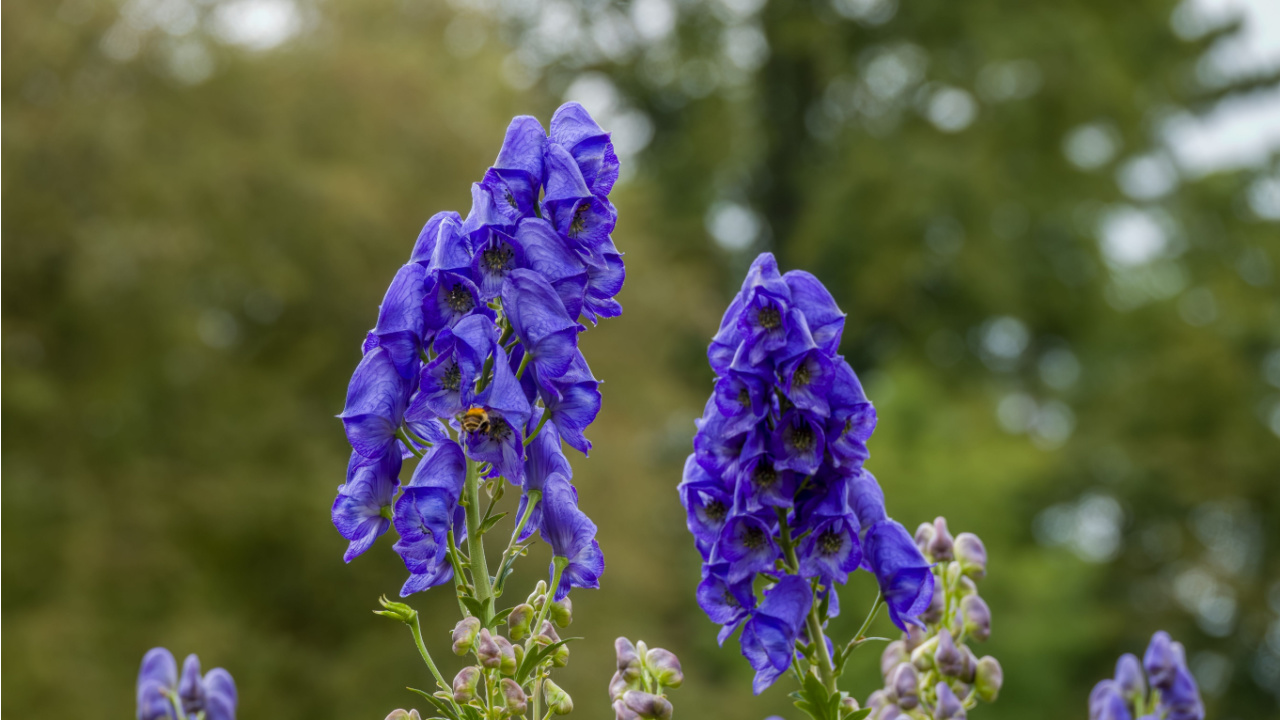
Aconite, known as Wolfsbane, Monkshood, or Devil’s Helmet, stands out for its lethal beauty. Although it’s incredibly dangerous, it’s one of my absolute favorite plants, although I don’t keep any on my property because of my pets. Just in case. The toxic compounds in aconite are incredibly potent, and I don’t want to risk it.
Touching or ingesting even a small part of this plant can be incredibly dangerous, as it contains potent cardiotoxins and neurotoxins that affect the nervous system, leading to symptoms ranging from gastrointestinal distress to severe respiratory issues, which can quickly result in death. Native to the northern hemisphere, Aconite has a long history of use as a poison due to its high concentrations of toxic compounds. Even today, there is no known antidote, so the mortality rate remains very high.
27. Suicide Tree
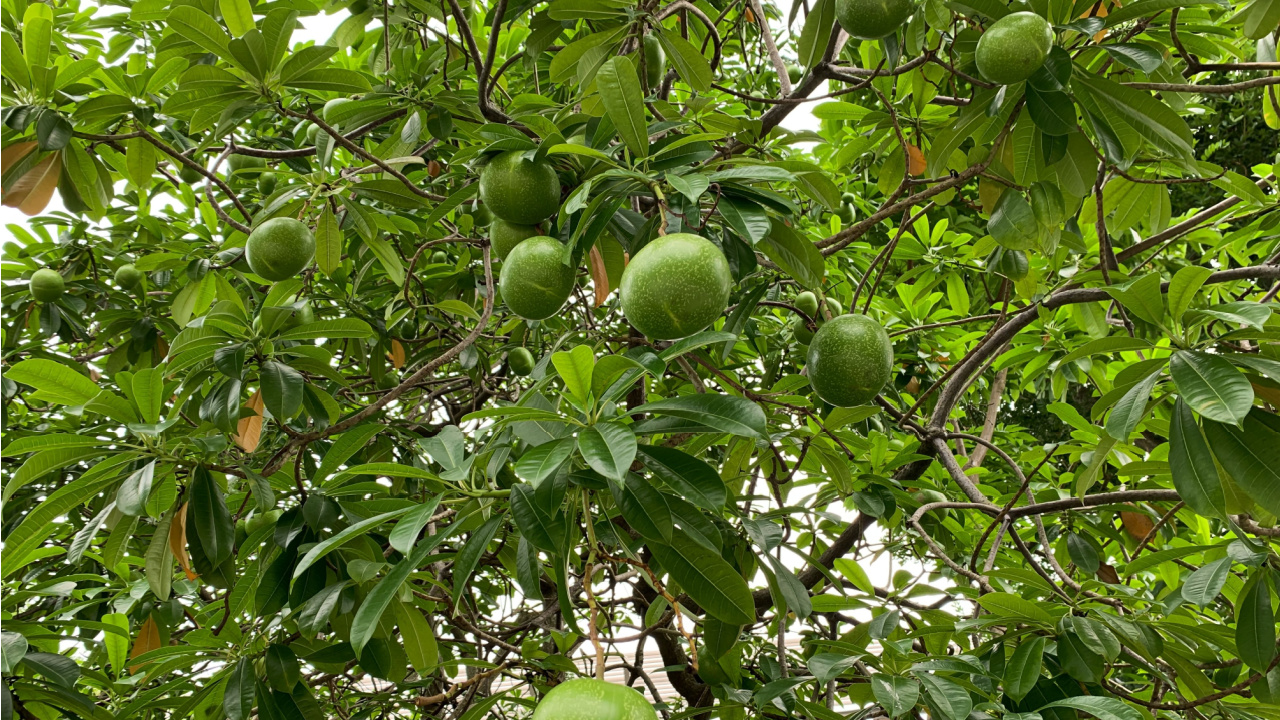
The suicide tree, or Cerbera odollam, earns its grim name from its use in suicides and murders, particularly in parts of India. Every part of this plant, especially its seeds, contains cerberin, a toxin that disrupts the heart’s rhythm. Its fruits might look tempting, but they are very dangerous and can cause death swiftly.
Consuming just a single seed from this tree can be fatal, making it one of the most infamous plants in the world for its association with intentional poisonings.
25 Winter Foraging Foods to Save Money on Your Grocery Bill
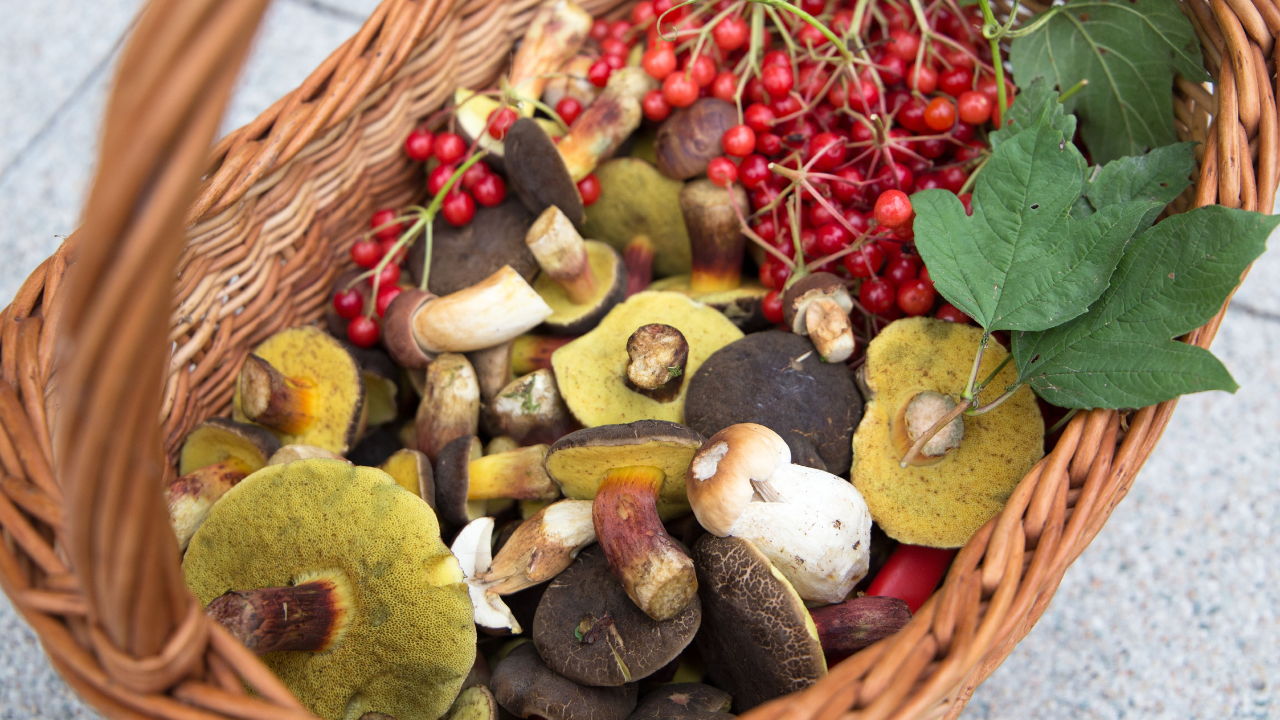
With food prices going up by 15% from October 2021 to October 2023, finding ways to cut down your grocery bills is more important than ever. Winter foraging is an awesome way to add to your pantry for free. Yes, you get free food in the form of wild edibles, but it’s also fun for the whole family, gets you moving, and reconnects you with nature.
Even though foraging in winter seems hard compared to the bounty of late summer, there’s still plenty out there if you know where to look. Plus, if things do go south, you need to know how to get wild foods to survive when there are no old-world supplies to access.
14 Essential Canned Goods for Your Emergency Pantry
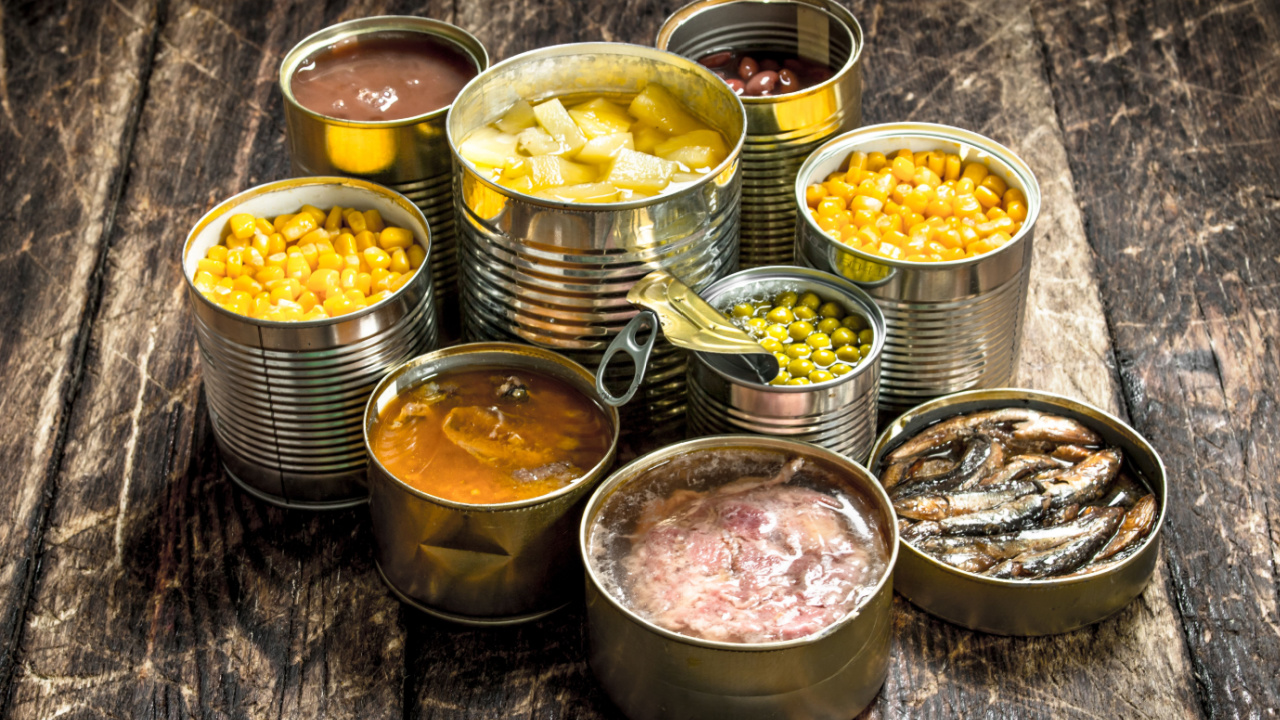
I firmly believe in keeping a well-stocked emergency pantry. While fresh food is ideal, in a survival situation, we may not be that lucky. So, for my family, even though we grow a lot of our own food, canned goods play a crucial role in emergency preparedness. They offer a reliable source of nutrition when access to fresh produce may be limited. The goods you stockpile should be affordable, easy to store, and full of nutrition.
24 Most Devastating Blizzards in US History

For preppers, understanding the power and impact of historic blizzards is key to being prepared for future winter emergencies. Each of these historic snowstorms teaches valuable lessons about resilience, planning, and survival. The more prepared we are, the better our chances of survival in an emergency scenario.



